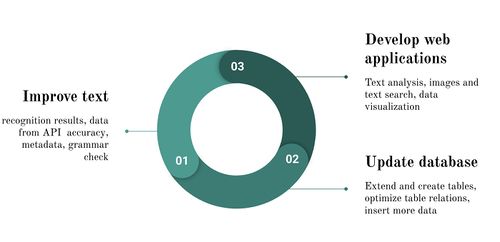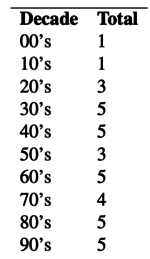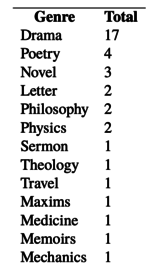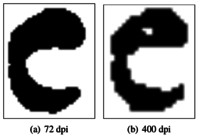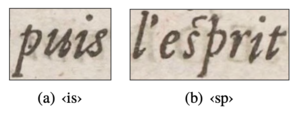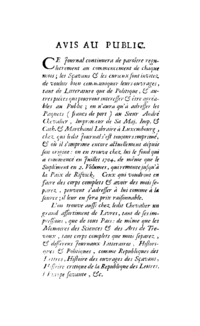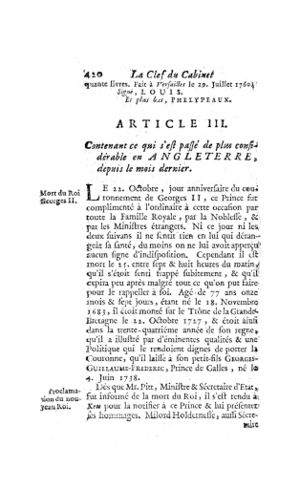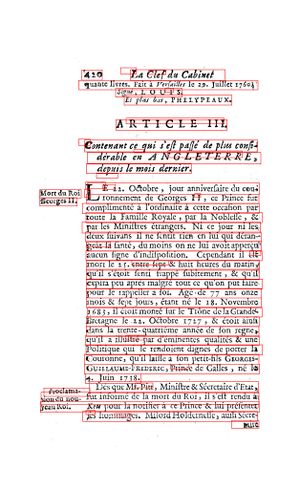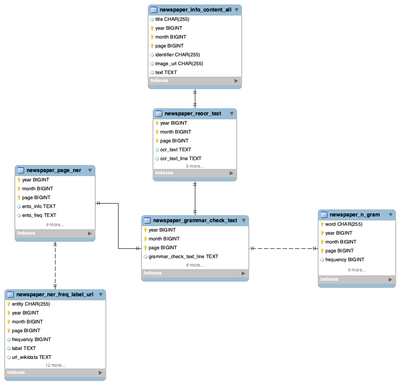Europeana: A New Spatiotemporal Search Engine: Difference between revisions
Xinyi.ding (talk | contribs) |
Xinyi.ding (talk | contribs) |
||
| Line 59: | Line 59: | ||
It means that it do not dissimilate‹u›/‹v› (diuin) or ‹i›/‹j›, we do not normalise accents (interprete and not interprète), we keep historical, diactritical (Eſcripts and not Ecrits) or calligraphic letters (celuy and not celui). We keep the long s (meſme and not mesme), but most of the other allographetic variations are not encoded. | It means that it do not dissimilate‹u›/‹v› (diuin) or ‹i›/‹j›, we do not normalise accents (interprete and not interprète), we keep historical, diactritical (Eſcripts and not Ecrits) or calligraphic letters (celuy and not celui). We keep the long s (meſme and not mesme), but most of the other allographetic variations are not encoded. | ||
[[File:sample2.png|600px| | [[File:sample2.png|600px|upright=1.5|right|thumb|Examples of ignored allographetic variants, Rotrou, Alphrede, 1639]] | ||
One exception has been made to our unicode rule: aesthetic ligatures that still exist in French (‹œ› vs ‹oe›) have been encoded, but not those that have disappeared despite their existence in unicode. | One exception has been made to our unicode rule: aesthetic ligatures that still exist in French (‹œ› vs ‹oe›) have been encoded, but not those that have disappeared despite their existence in unicode. | ||
[[File:sample3.png|300px| | [[File:sample3.png|300px|upright=1.5|right|thumb| Examples of ignored ligatures, Rotrou, Alphrède, 1639]] | ||
Revision as of 17:24, 21 December 2022
Introduction and Motivation
1. search engine kraken 2. model ocr17
Europeana as a container of Europe’s digital cultural heritage covers different themes like art, photography, and newspaper. As Europeana has covered diverse topics, it's difficult to balance the ways to present digital materials according to their content. The search for some specific topics needs to go through different steps, and the result of the search might also dissatisfy the user's intention. After having a deep knowledge of the structure of Europeana, we decided to create a new search engine to better present the resources according to their contents. Taking the time and scale of our group into account, we selected the theme Newspaper as the content for our engine. In order to narrow down the task further, we selected the newspaper La clef du cabinet des princes de l'Europe as our target.
La clef du cabinet des princes de l'Europe was the first magazine in Luxembourg. It appeared monthly from July 1704 to July 1794. There are 1,317 La clef du cabinet des princes de l'Europe magazines in Europeana. The page number for each magazine is between 75 to 85. In order to reduce the amount of data to a scale that can be dealt with on our laptops, we randomly selected 8,000 pages from the whole time span of the magazine.
In order to have a better presentation of the specific magazine on our engine, we mainly implement OCR, text analysis, database design, and webpage design.
OCR is the electronic or mechanical conversion of images of typed, handwritten, or printed text into machine-encoded text. This conversion from in-kind to digital format can not only be used for historical and cultural protection but also provide us access to a deep analysis of them based on the computer. In our work, we used OCR to convert the image format magazine to text and store the text in the database, which provides us with more convenience and chances to better deal with them.
For the text analysis part of our work, we used 3 methods: name entity, LDA, and n-gram to deal with the text we got.
For the presentation of the magazine, we developed a webpage to realize the search and analysis functions. The webpage aim at realizing interactivity between users, and let users have an efficient way to reach the content they'd like to get.
Deliverables
- The 8000 pages of La clef du cabinet des princes de l'Europe from July 1704 to July 1794 in image format from Europeana's website.
- The OCR results for 8000 pages in text format.
- The dataset for the text and results of text analysis based on LDA, name entity, and n-gram.
- The webpage to present the contents and analysis results for La clef du cabinet des princes de l'Europe.
- The GitHub repository contains all the codes for the whole project.
Methodologies
This project includes three main parts which are text processing, database development and web applications. At the same time, the project is conducted with a synergetic process of improving those three parts. Toolkits of this project contain Python for text processing and web applications, MySQL for database development, and FLASK for the webpage framework. In the end, the dataset is composed of four versions for 100 newspaper issues including 7950 pages, that is images, text from Europeana, text after OCR and text after OCR and grammar-checker.
Text processing
Data acquisition
Using the API given by Europeana's staff, the relevant data is acquired by web crawler. We first get the unique identifier for each issue, then use it to get the image url and ocr text provided by Europeana. We also get the publication date and the page number of every images, which is helpful for us to locate every page and retrieve them in the future. The data is stored in <Title, Year, Month, Page, Identifier, Image_url, Text> format. The crawling result is shown below.
- 1317 Issues
- Number of pages per issue: roughly 80 pages
- Number of words per page: roughly 200-300 words
Optical character recognition(OCR)
Ground truth and the model
The reliability of OCR models depends on both the quantity and the quality of training data. Quantity needs to be produced and made freely available to other scholars. On the other hand, quality needs to be properly defined, since philological traditions vary from one place to another, but also from one period to another. The essentials of successful recognition for this type of newspaper are to target the old French during 18 centuries while meeting both quality and quantity of dataset. Therefore, the model for recognition used in this project is trained by OCR17. The corpus of Ground Truth(GT) is made of 30,000 lines taken from 37 French prints of the 17th century, following strict philological guidelines.
1. Corpus building: The training data is selected according to two main categories bibliographical (printing date and place, literary genre, author) and computational (size and resolution of the images) information. Regarding dates, prints are diachronically distributed over the century, with a special attention for books printed between 1620 and 1700. Regarding genre, the result can be seen as a two-tier corpus with a primary one consisting of literary texts (drama, poetry, novels. . . ) and a secondary one made of scientific works (medicine, mechanics, physics. . . ).
The inbalanced corpus are made for two main reasons. On the one hand, dramatic texts tend to be printed in italics at the beginning of the 17th century. On the other hand, they traditionally use capital letters to indicate the name of the speaker, which is an easy way to increase the amount of such rarer glyphs and is also helpful to deal with highly complex layouts.
At the same time, low resolution of images would wrong recognition, the model is able handle low resolution images properly.
2. Transaction rules:
The transaction guideline in this model is to encode as much information as possible, as long as it is available in unicode. The result is therefore a mix between graphetic and graphemic transcription.
It means that it do not dissimilate‹u›/‹v› (diuin) or ‹i›/‹j›, we do not normalise accents (interprete and not interprète), we keep historical, diactritical (Eſcripts and not Ecrits) or calligraphic letters (celuy and not celui). We keep the long s (meſme and not mesme), but most of the other allographetic variations are not encoded.
One exception has been made to our unicode rule: aesthetic ligatures that still exist in French (‹œ› vs ‹oe›) have been encoded, but not those that have disappeared despite their existence in unicode.
3. Model:
The model has been trained on Kraken OCR engine and tested with small samples of 18th century out-of-domain prints to test the generality of our model – only with roman or italic typefaces. On top of training a model using the default setup regarding the network structure, training parameters. . . , several modifications, have been tested to maximize the final scores.
| Model | Test | 16th c. prints | 18th c. prints | 19th c. prints |
|---|---|---|---|---|
| Basic model | 97.47% | 97.74% | 97.78% | 94.50% |
| with enlarged network | 97.92% | 98.06% | 97.78% | 94.23% |
| + artificial data | 96.65% | 97.26% | 97.74% | 95.50% |
| with enlarged network | 97.26% | 97.68% | 97.84% | 94.84% |
The training process is completed on Kraken which is an optical character recognition package that can be trained fairly easily for a large number of scripts. Some training details can be seen here.
OCR Procedure
Images for OCR is crawled from Europeana API. The resolution is 72 dpi and the color mode is in grayscale with white background. A low resolution introduces significant changes in the shape of letters. However, a few lines in images are blurry and glared, so noise is not a big problem during OCR. Besides, due to a simple and clear layout of the newspaper, results of segmentation are pretty good.
Based on the above, the first step is binarization to convert greyscale images into black-and-white(BW) images. By comparing BW images with original ones, it finds that characters on binarized images is milder and vaguer. In this case, the original images are used to segment. e
The next step is to segment pages into lines and regions. Since the whole procedure of OCR is carried out on Kraken engine, page segmentation is implemented by the default trainable baseline segmenter that is capable of detecting both lines of different types and regions.
At last, recognition requires grey-scale images, page segmentation for images, and the model file. The recognized records are output as a text file after serialization.
Grammar checker
To optimize results obtained from OCR, this project used the grammar checker API to refine the text. After sending the requests to the server of the grammar checker, it will return a JSON file that contains all the modifications for the specific text. By using the offset and length information in the JSON file, we can locate the position of the word that should be modified in the original text. For every modification, we used the first possible value to replace the original word.
Text Analysis
- Named entity
- N-gram
Database development
The version of MySQL server in this project is 8.0.28. The data interacts with MySQL database via Python and its Package pymysql and sqlalchemy. The database contains five main schemas newspaper_grammar_check_text, newspaper_info_content_all, newspaper_ner_freq_label_url, newspaper_page_ner, newspaper_reocr_text. The details information of this database can be seen in the ER relationships figure.
Schema newspaper_info_content_all includes all original text, image URL and date information. Schema newspaper_reocr_text includes text after OCR in two formats--one is line by line as in pages, another is in one line getting rid of line break <\n>. Schema newspaper_grammar_check_text includes OCR text after grammar checking in on line. Schema newspaper_page_ner includes all entity information like entities, frequencies, QID of wiki knowledge and URL of wiki knowledge in dictionary format. Those four schemas' primary key is <year, month, page>, which means each row presents one page. The last schema newspaper_ner_freq_label_url stores entities in a sparse way. Each row presents one entities in one page.
Such design is all for the web application such as search and visualization.
Webpage applications
Tools
Flask is a Python framework for building web apps. It's famous for being small, light and simple. And MySQL is a database system used for developing web-based software applications. We use Flask to build the front-end content and MySQL to connect with local database. By doing so we are able to retrieve data from the local server and present it on the webpage.
Feature Design
- Search Page
- Full Text Search
- Named Entities Search
- N-gram Search
- Detailed Page
Retrieval Method
Interface
Quality Assessment
Subjective Assessment
Objective Assessment
- Dictionary Method
- Original text 0.56
- Reocr text 0.57
- Text refined by grammar checker 0.61
- Entropy method
| 1-gram Entropy | 2-gram Entropy | |
|---|---|---|
| Old french | 4.24 | 7.88 |
| Original text | 4.27 | 7.99 |
| Reocr text | 4.13 | 7.74 |
| Grammar checker refined text | 4.17 | 7.76 |
| Random text | 5.41 | 10.83 |
Limitations
Project Plan and Milestones
| Date | Task | Completion |
|---|---|---|
| By Week 3 |
|
✓ |
| By Week 5 |
|
✓ |
| By Week 6 |
|
✓ |
| By Week 7 |
|
✓ |
| By Week 8 |
|
✓ |
| By Week 9 |
|
✓ |
| By Week 10 |
|
✓ |
| By Week 11 |
|
✓ |
| By Week 12 |
|
✓ |
| By Week 13 |
|
✓ |
| By Week 14 |
|
✓ |
Github Repository
https://github.com/XinyiDyee/Europeana-Search-Engine
